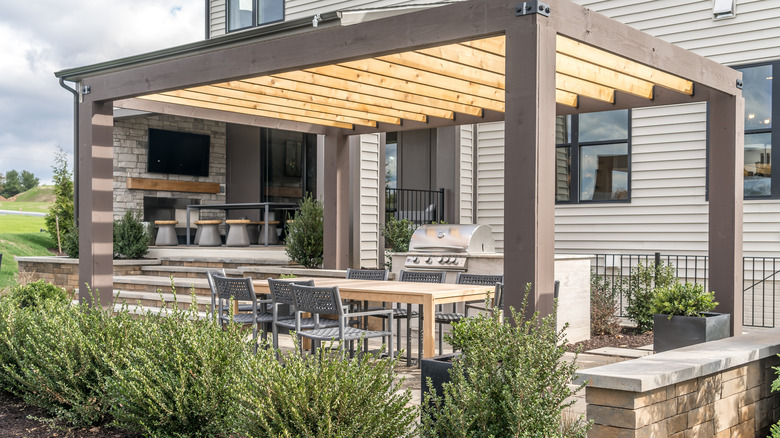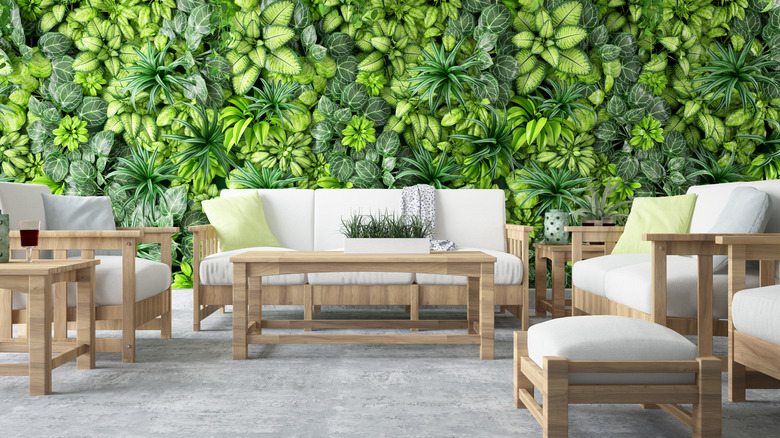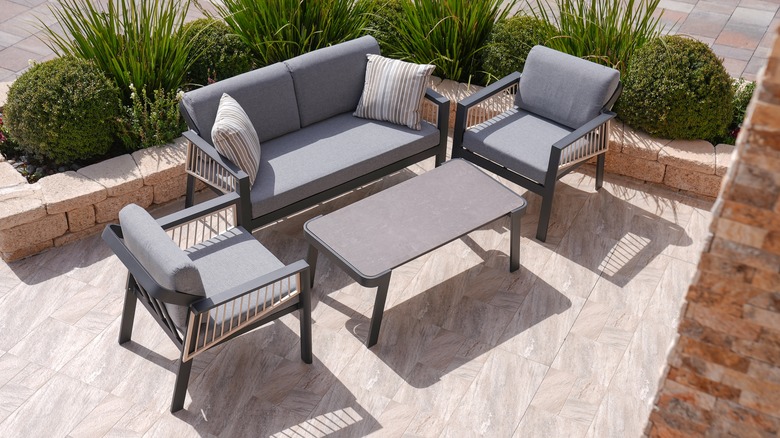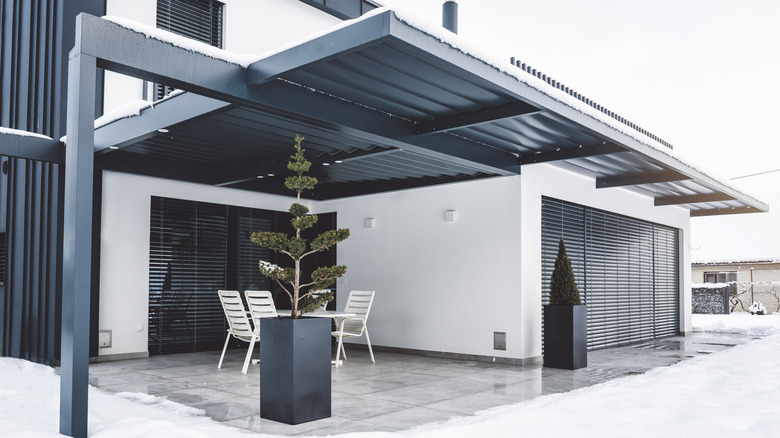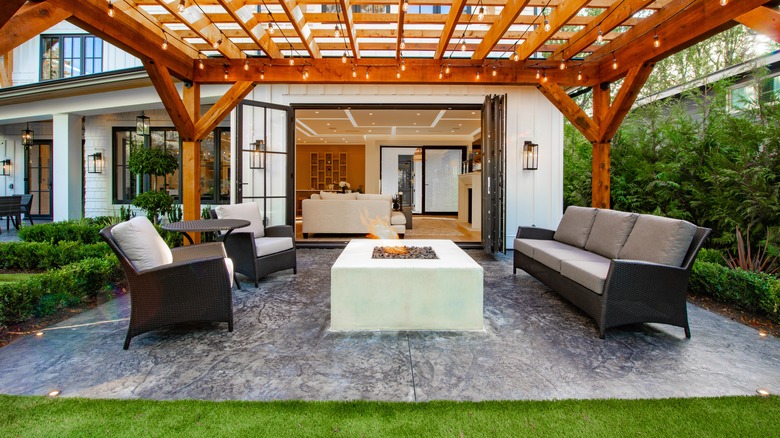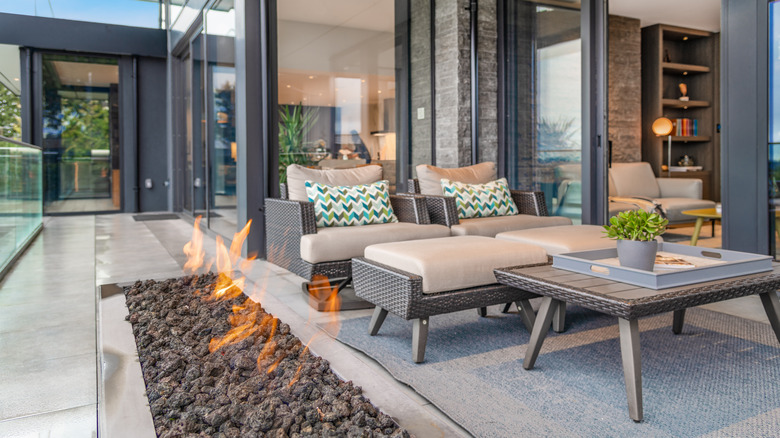How To Choose Between The Most Durable Furniture Materials For Your Patio
Creating an inviting and durable outdoor living space is an art that begins with choosing the right patio furniture. When selecting the most durable furniture material for your patio, the decision isn't just about picking pieces that visually appeal to you — you need to consider other factors, including your local weather and your budget. Also, remember that the final decision will directly impact how your outdoor space withstands the test of time. For this reason, the durability of the furniture material plays a pivotal role.
The variety of materials available for outdoor furniture is vast, each with its unique blend of resilience, aesthetics, and maintenance needs. Some materials, like teak, offer exceptional weather resistance and longevity. Others, such as aluminum or plastic, provide the convenience of lightweight design and low maintenance. Still, like wrought iron, others bring strength and classical elegance to your outdoor space.
But how do you choose between these materials? This guide aims to assist you in your journey of selection. You'll delve into the world of outdoor furniture materials, exploring the strengths and weaknesses of each material and everything in between. You'll also understand which factors should influence your decision — by carefully weighing them, you can create an inviting outdoor living space.
Teak
If you value longevity and don't mind a bit of upkeep, teak could be your ideal choice. If you opt for teak, you're choosing an attractive hardwood with a timeless elegance. This material is highly resistant to weather and mold, allowing your furniture to withstand the harsh outdoor elements. Teak wood is also dense and oily, providing a natural water-repellent effect that keeps it from cracking or becoming brittle, reducing your maintenance workload. This ensures your furniture pieces maintain timeless charm and functionality through the seasons.
However, the allure of teak furniture comes with drawbacks. First, it's a premium wood, meaning it comes with a hefty price tag. You're paying for quality and longevity, which might strain your budget. Second, while low-maintenance, teak gradually weathers to a silver-gray hue. Some people love this look, but if you prefer the original color, you'll need to treat it regularly with a teak sealer.
Moreover, teak furniture is quite heavy due to its density, making it hard to move around. This can be a plus, as it remains stable in high winds, but it might pose a challenge if you frequently rearrange your outdoor space. Lastly, ethical sourcing is a concern. Teak often comes from Southeast Asia, and some sources may be linked to deforestation and harmful environmental practices. Therefore, ensure you buy from responsible suppliers to minimize your ecological footprint.
Aluminum
When browsing outdoor aluminum furniture, you'll come across different types, each with unique attributes. Cast aluminum is often crafted and is sturdier than cheaper aluminum pieces, and it also offers intricate designs, creating a more traditional, often ornate look. Regardless of type, aluminum patio furniture is a practical choice as it's generally lower maintenance than wood. Furthermore, aluminum is a versatile material that can be styled to suit various outdoor patio designs.
Modern manufacturing techniques enable a range of styles, from traditional to contemporary, so you can find pieces to match your outdoor aesthetic. Aluminum is also recyclable, providing an environmentally friendly choice when the furniture ends its life. It's also rust-proof and weather-resistant, making it perfect for different climates. You can leave it outside all year without worrying. The ease of maintenance is also a perk; a simple wipe-down with a damp cloth usually suffices.
However, there are downsides to aluminum. Although durable, even the powder-coated version can be prone to scratching. Regarding the cost, while it's generally more affordable than teak, premium-quality aluminum furniture can be expensive. Additionally, aluminum's lightweight nature, while convenient for rearranging, might cause issues in high-wind areas — your furniture could tip or blow away during such seasons and can become uncomfortably warm to the touch in hot weather. Therefore, consider your local climate and usage conditions before deciding on this material.
Wrought iron
Should robustness be your primary concern, you might lean towards wrought iron. Its sturdy nature is its biggest advantage, which equips it to handle harsh weather conditions and bears substantial weight — which is also an advantage in windy conditions, as it stays put, resisting even strong gusts. This material is also highly customizable, offering designs from traditional scrolls to modern minimalism, matching any desired outdoor aesthetic. Another benefit is longevity. Wrought iron furniture can last for years, even decades, with proper care. It's not easily damaged or broken, providing excellent value for your investment.
Despite these benefits, you'll also find some cons to wrought iron furniture. It's heavy, making rearranging your outdoor space a challenging task. Comfort can also be an issue — the hard surface requires cushions for a comfortable sitting experience, adding to your overall cost and upkeep. Also, evaluate your local weather conditions and comfort needs if you're considering wrought iron.
This material absorbs and retains heat, making it uncomfortable to use on sunny days. Wrought iron is also prone to rust if not properly treated or maintained, especially in wet climates. The good news is that maintenance, while necessary, is not overly demanding. You may need to apply a protective sealant or touch it with rust-resistant paint to prevent rusting and prolong its lifespan. But the rewards of this care are evident in the timeless elegance of wrought iron.
Wicker
When considering outdoor wicker furniture, you're entering a world of comfort and charm. With its timeless, woven design, wicker can instantly create a cozy, inviting atmosphere in your outdoor space. It's lightweight, easy to move around, and offers a unique aesthetic that's both rustic and sophisticated. Another benefit is versatility. Wicker furniture comes in a variety of colors and designs. Whether after a vintage look or modern minimalism, you will likely find a piece that suits your style. Today, many wicker furniture sets are made from synthetic resin, which requires little upkeep and is more weather-resistant than traditional natural wicker.
However, there are cons to wicker furniture. Natural wicker can be damaged by prolonged exposure to moisture and should not be left outside in rainy weather, limiting its usability. Even synthetic wicker can become brittle over time if exposed to harsh weather conditions. Cleaning wicker furniture can be somewhat laborious due to the weave pattern, which can trap dust and dirt.
Additionally, wicker can fray or unravel over time, primarily if not maintained correctly. Finally, while wicker furniture is generally less expensive than other materials like teak, it can still carry a considerable price tag, especially for natural, handmade varieties. Thus, when contemplating wicker for your outdoor space, weigh these factors to ensure you're making the best decision for your needs.
Factors to consider when choosing materials
You should consider key factors when choosing a suitable material for your patio furniture. The first is your local climate. If you live in an area with heavy rain or humidity, woods like aluminum, which are resistant to moisture and rust, could be ideal. If your region is prone to high winds, heavier furniture made from wrought iron may be a better fit, as aluminum furniture won't withstand strong winds. Next, think about maintenance. All outdoor furniture requires some upkeep, but the amount varies between materials. Materials like aluminum or all-weather wicker, which need a wipe-down with a damp cloth, might be preferable if you favor low maintenance.
Lastly, consider your patio's aesthetic and style. While durability is essential, you also want furniture that complements your outdoor space and makes it inviting. Each material lends itself to different formats, so consider what will best suit your vision for the space.
In conclusion, choosing the right material for your patio furniture should balance durability, maintenance, style, and climate suitability. Whether it's the natural elegance of teak, the versatility of aluminum, the strength of wrought iron, or the comfort of all-weather wicker, each material offers unique benefits. By evaluating your specific needs and conditions, you can choose a material to ensure your patio furniture is a durable and beautiful addition to your outdoor living space.
